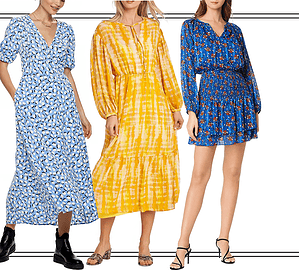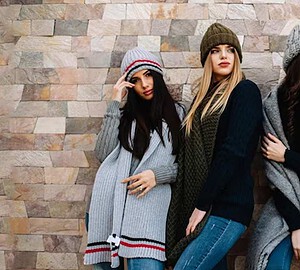When Meghan Markle stepped out in Fiji wearing an electric-blue cape gown in 2018, it wasn’t just a fashion moment—it was cultural communication. The clean lines, bold color, and impeccable fit of the Safiyaa creation telegraphed confidence, modernity, and intentionality—precisely the narrative a modern royal might wish to project. This singular moment exemplifies how fashion functions as a cultural lens, reflecting and shaping our collective values and aspirations. It also marked a pivotal moment for Safiyaa, the London-based demi-couture brand founded by Daniela Karnuts, cementing its position as a storyteller in the evolving narrative of modern luxury.
In an era where consumption patterns are shifting dramatically—not unlike the seismic changes we’ve witnessed in entertainment as viewers abandon cable for streaming services—Safiyaa offers an instructive case study in how fashion brands can adapt to changing cultural expectations while maintaining their core identity. The brand’s approach to demi-couture—that elusive middle ground between haute couture and ready-to-wear—serves as a powerful expression of how cultural values around sustainability, gender equality, and authentic luxury are reshaping industries once resistant to change.
“I want the woman to wear the dress, and not the dress to wear the woman,” says Karnuts, articulating a philosophy that places the wearer’s agency at the center of the fashion experience. This perspective stands in stark contrast to an industry historically built on dictating trends and creating artificial obsolescence. Just as streaming services have upended traditional viewing models by giving consumers greater control over what they watch and when they watch it, Safiyaa’s approach to fashion empowers women to define their relationship with clothing on their own terms.

The Cultural Origins of Demi-Couture
Every cultural shift begins with identifying a gap—a disconnect between what people need and what institutions provide. For Daniela Karnuts, this revelation came during her corporate career, where she observed firsthand the stark gender divide in professional dressing. While men had Savile Row—an institution devoted to crafting made-to-measure wardrobes designed to last a lifetime—women were forced to choose between overpriced high fashion and disposable fast fashion. Neither option offered the quality, longevity, and investment value that characterized men’s tailoring.
Safiyaa, named after Karnuts’ daughter (the word meaning “purity” in Urdu), launched in 2011 with a focused collection of 12 core pieces designed to be mixed and matched endlessly. This deliberate restraint stands in direct opposition to the fashion industry’s typical strategy of overwhelming consumers with choices, many of which quickly become obsolete. Instead, Karnuts focused on perfecting a limited range of silhouettes that could remain relevant year after year—an approach that resonates with cultural shifts toward minimalism, conscious consumption, and the elusive concept of “timelessness.”
The Made-to-Order Revolution
Perhaps the most culturally significant aspect of Safiyaa’s approach is its made-to-order model—a system that fundamentally challenges the industry’s addiction to overproduction and planned obsolescence. Rather than producing seasonal inventory that may or may not sell (and often ends up discounted or in landfills), Safiyaa only creates what has been specifically ordered by a client. This direct response to consumer demand eliminates waste before it begins, addressing growing cultural concerns about fashion’s environmental impact.
“The most sustainable garment is the one you keep wearing,” notes Karnuts, cutting through the greenwashing that often characterizes fashion’s sustainability messaging. This focus on longevity over novelty reflects a broader cultural reevaluation of what constitutes value. As consumers become increasingly aware of the environmental and social costs of rapid consumption, brands that prioritize quality and durability over constant reinvention are finding new cultural relevance.
The made-to-order model also restores something that mass production had largely eliminated from fashion: the human connection. Each Safiyaa piece is constructed by a single artisan from start to finish—an approach that most luxury houses abandoned long ago in favor of assembly-line efficiency. This commitment to craftsmanship not only results in higher quality garments but also tells a story about valuing human skill and expertise in an age of increasing automation.
Fashion as Cultural Communication
When Michelle Obama selects a Safiyaa creation for a public appearance, or when Jennifer Lopez chooses the brand’s sculptural silhouettes for a high-profile event, these choices communicate far more than personal taste. They signal alignment with values that Safiyaa embodies: female empowerment, thoughtful consumption, and an appreciation for craftsmanship over conspicuous branding.
The blue cape gown that Meghan Markle wore in Fiji exemplifies how a single garment can tell a complex cultural story. The piece projected strength and modernity while honoring the formality the occasion demanded. Its bold color ensured visibility—critical for a royal appearance—while its clean lines reflected a contemporary approach to elegance. The cape element added drama without sacrificing functionality, allowing freedom of movement while creating a memorable silhouette for photographs that would circulate globally.
This strategic use of fashion as communication isn’t exclusive to public figures. Every consumer makes cultural statements through their clothing choices, whether consciously or not. What Safiyaa offers is the opportunity for these statements to be more intentional, more enduring, and more aligned with evolving values around consumption and identity.
The Gender Dynamics of Fashion Evolution
The historical divide between menswear and womenswear reflects broader cultural attitudes about gender. Since the late 18th century, men’s fashion has emphasized consistency, practicality, and longevity, while women’s fashion has been subjected to constant reinvention—hemlines rising and falling, silhouettes expanding and contracting, styles declared “in” one season and “out” the next.
This pattern isn’t accidental; it reflects historical power imbalances and different cultural expectations for men and women. Men were granted the luxury of wardrobes that projected stability and authority, while women were expected to demonstrate adaptability and ornamental value through constant style updates.
By applying menswear tailoring principles to women’s clothing, Daniela Karnuts challenges these gendered expectations. Safiyaa offers women the same reliability and investment value that men have long taken for granted in their wardrobes. This approach resonates with contemporary movements toward gender equality, offering a subtle but powerful rejection of fashion systems that have historically treated women’s appearance as more ephemeral and less serious than men’s.
The Economics of Cultural Change
Like any cultural shift, the move toward demi-couture and made-to-order fashion requires not just ideological alignment but economic viability. Safiyaa’s business model offers insights into how fashion can navigate this transition.
Traditional fashion economics rely on producing large quantities of inventory in advance, marketing aggressively to create demand, and then often discounting heavily to clear unsold stock. This approach creates artificial scarcity and urgency, manipulating consumers into making impulsive purchases they may later regret. The psychology behind this model depends on creating constant dissatisfaction—convincing consumers that what they already own is inadequate or outdated.
Safiyaa’s model inverts this approach. By producing only what clients actually order, the brand eliminates inventory risk and waste. This efficiency allows for investment in quality materials and craftsmanship rather than marketing designed to manufacture desire. The focus shifts from convincing consumers they need something new to creating pieces worthy of long-term investment.
This approach aligns with broader cultural shifts in how we view consumption. Just as streaming services have disrupted the cable TV bundle by allowing consumers to pay only for content they actually want, made-to-order fashion eliminates the waste inherent in traditional retail models where much of what is produced is never sold at full price.
The Future Cultural Landscape
As we look to the future, Safiyaa’s approach offers a compelling vision for how fashion might evolve as a cultural lens. The brand demonstrates that luxury can be defined by precision and presence rather than logos or trend-chasing. It shows that sustainability can be integrated into business models rather than treated as an afterthought or marketing angle. Most importantly, it illustrates how fashion can empower rather than exploit, creating garments that enhance wearers’ lives rather than adding to their anxiety.
“Fashion has perfected the art of urgency,” Karnuts observes, referencing an industry that has historically thrived on convincing consumers they are always one purchase away from sartorial perfection. Safiyaa challenges this by creating emotional connections through quality and fit rather than through the fleeting dopamine hit of newness.
As cultural values continue to evolve toward more conscious consumption, brands that align with these shifts will likely find themselves at an advantage. The success of Safiyaa suggests that consumers are increasingly willing to invest in quality over quantity, story over status, and longevity over novelty.
In a world where so much is disposable and ephemeral, clothing that is designed to last—both physically and aesthetically—offers something increasingly precious: permanence. Through demi-couture, Daniela Karnuts isn’t just telling the story of contemporary women; she’s inviting them to write their own narratives, one timeless piece at a time.



